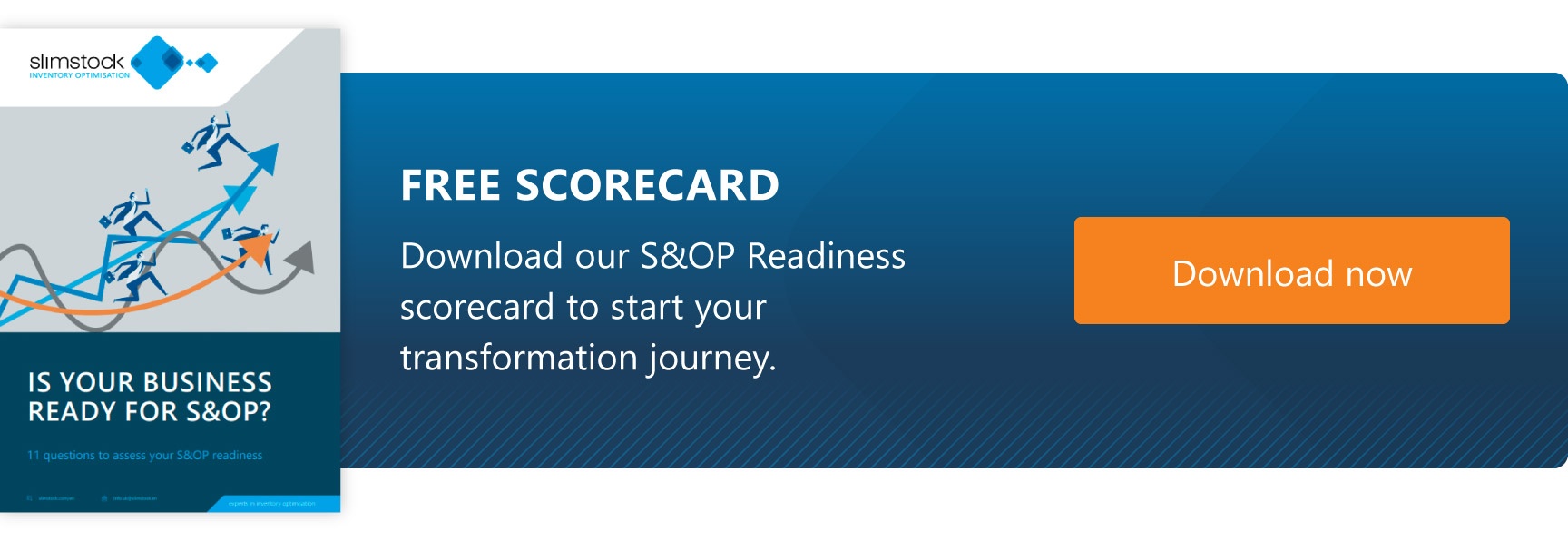A Practical Roadmap for Business Growth
Turning your strategy into operational excellence may well mean sailing into uncharted waters. To explain it, let’s use an example of someone who’s done just that, Christopher Columbus, who’s often cited as discovering America. Now whether he did, or didn’t ever land in North America, let’s assume that was his plan to begin with.
Chris Columbus & his roadmap to Sales & Operations Planning (S&OP)
The first thing old Chris did, was to think of a strategy to get there. He’d have charted the way, thought about supplies, how many crew members he’d need and how long he’d be away from his beloved wife.
He’d then have created a more detailed plan on how to fulfil this strategy. Where would he sail to first? Where could he re-stock? What were his contingency plans? He’d have packed the ship, double checked the cheese and wine rations and set off.
En route, old Chris ran into some bother. For example, it’s widely noted he landed in the Caribbean a few times, but may have never actually set foot in America. This is what we call ‘managing the plan’. How could he steer back on course? How could he align to the original plan?
Maybe his charts were wrong? Or the man in charge had drunk too much rum? We’ll never know. But if his team had known of S&OP, his claim on American soil might be substantiated to this day.
If you want to close the gap between your ideal plans and real results better than Chris did, keep reading. We’ve got something that can help.
Define your supply chain strategy
Horizon: 3-5 year
Review: Annually
Defining and reviewing your supply chain strategy should be done every year. Your supply chain strategy should be an operational perspective of your overall business strategy. You should highlight the next 3-5 years of business planning and base your thinking around this question: What do we need to do to realise our ambition?
How can you achieve success?
To create an actionable plan, you need to translate the growth part of your strategy. There needs to be ownership of budget and a willingness to make your plan SMART (specific, measurable, achievable, realistic, and timely). That means detailed planning, with immovable deadlines, personal ownership and the right investment.
Crucially, the only way you’ll know if you’re being successful is to measure and analyse along the way. As you know, what you think’s going to happen, and what actually happens, are two different things. So you need to analyse risks and measure results.

The pillars of operational effectiveness
The key to an effective supply chain strategy is translating business goals into smaller, unique tactics.
Whether these are based on operational resources, financial obligations, inventory planning, production or distribution, the main requirement is to be future-proof.
Can you deliver on the goals of the business?
And is each pillar propping up the ambitions of the business? Or will one in particular buckle under the pressure? You need to validate your supply chain partnerships and contemplate your product development and portfolio.
Create the tactical plan
Horizon: 1 year
Review: Quarterly
Your supply chain tactics should revolve around your higher-level supply chain strategy. Put simply, what can we do this year that will make our supply chain strategy a success?
What’s your position in the market?
Don’t be sidetracked by solely focusing on new products. They play just a small part in your overall portfolio and product management. Are any current products not driving value? Does your pricing strategy need evaluating? Is there a better service offering which might drive new business?
Setting KPIs around your strategy
Rhythmic reviews are crucial to ensuring that your supply capabilities can meet demands. There’s little use in making products no one buys. And even less sense in benchmarking, or even employing staff around an outdated portfolio. If your tactics are right, your KPIs will deliver in line with your supply chain strategy.

Closing the gap
Managing the gap is one of the most important elements of your tactical plan. That is, simply, are you under or overperforming on a product range, division or region? If a particular division is overperforming, how do you take full advantage? If one specific product is underperforming against budget, how can you reverse its fortunes?
Find your focus
Focused initiatives as part of a solid integrated business planning (IBP) process ensure you’re able to make a success of your tactical supply chain plan.
Manage the plan
Horizon: 1 year
Review: Weekly/ Monthly
Where are the gaps in your plan? How can you spot them as soon as possible and adapt your supply chain tactics to abate any deficiencies and capitalise on opportunities? Where should you focus your effort/time/ resources?
Speed, agility & robustness of vision
You must have access to information that shows where you’re over and underperforming. This is crucial in order to make robust and accurate decisions.
Your planning will be inefficient if it’s propped up by Excel spreadsheets
Increase efficiency and accuracy by giving yourself the agility to shorten the planning cycle with fast visualisations and plans.
Your executive team should be heard last
After demand & supply issues, inventory policies, KPI reviews, highlighting risks or crucial items and suppliers… your key focus is on managing the gap. In essence, allow your executive team to tackle problems and maximise opportunities with greater agility. Their job is decision-making, not fact-finding.
So who’s in charge?
The plan is. Not one individual or the diary obligations of your busiest stakeholder. You should be speedy, open, collectively minded and free of the constraints of legacy methods. Access to information, for all, is key. Everyone should have the same numbers to help the S&OP process run as smoothly as possible.
Execute according to plan
Horizon: Quarterly
Review: Daily / Weekly
Is your operation truly demand driven? Are you eradicating bottlenecks in the day-to-day running of the business? Are you offering the service you desire, whilst optimising your supply chain cost?
The missing link
S&OE is the vital bridge between rhythmic planning and dynamic execution. You should account for short-term problems like unforeseen demand spikes or shipping delays, and push every team in the process in the same direction. Sales becomes familiar with issues in Production, and Supply knows where sales are ramping up. Your executional structure should solve issues and execute plans to the nearest detail.
Automate where possible
If you’re able to dynamically automate parts of your process, then do so. Anywhere you can save time and resources, you’ll be thankful of the freedom to focus on more time-consuming tasks.
Focus, focus, focus
Focus is always the most important attribute in executing your supply chain plan. Slick execution can’t happen if your team isn’t fixated on delivery. And make sure every decision that’s made is done with the most in depth insights possible. That means incisive supporting information which considers impact and outcomes.
Roadmap to sales and operations planning (S&OP) takeaways
Different facets of your business operate on different time horizons. For instance, while the supply chain strategy usually looks at a 3-5 year horizon, tactical plans are designed with a 1-year outlook, and execution demands an almost immediate focus. Regular reviews at various intervals, from annual to daily, are imperative to ensure everything is on track.
The supply chain strategy essentially provides an operational perspective of the broader business strategy. It’s about determining the steps required to realize business ambitions over a set time frame. To bring these strategies to life, businesses must break down their overarching goals into SMART objectives and ensure resources, timelines, and ownership are aptly designated.
A crucial aspect of any strategy is consistent measurement and analysis. Regular assessments allow businesses to understand their progress, evaluate risks, and make necessary plan adjustments. Tactical planning bridges the gap between high-level strategy and daily operations. This involves a detailed outlook on supply chain actions for the year, encompassing product evaluations, pricing strategies, and service offerings.
Key Performance Indicators (KPIs) play a pivotal role. They must align seamlessly with the supply chain strategy and undergo periodic reviews to provide insights on performance against set benchmarks. Continual management and monitoring of the plan to recognize and adjust for the gaps between planned objectives and actual results is what ensures targets are met.
When it comes to execution, the emphasis should be on a demand-driven operation, focusing on eliminating bottlenecks and ensuring efficient day-to-day management. Introducing automation in repetitive or time-intensive processes can save invaluable time and resources. This automation allows businesses to allocate more effort to tasks that demand human intelligence and focus. Furthermore, the necessity for focus is omnipresent, from planning to execution.
One significant insight from the guide is the inadequacy of outdated tools, like Excel, for contemporary planning needs. Modern visualization tools and planning software can drastically enhance efficiency and effectiveness. A collaborative spirit and open access to data are paramount. Every stakeholder, regardless of their role, should have consistent data access. This holistic approach ensures decisions are made collectively, facilitating a smoother S&OP process. The primary role of the executive team should be decision-making based on data and insights, and not the discovery of this data.
In conclusion, the roadmap underscores the importance of thorough planning, regular reviews, agile execution, and continuous measurement in navigating the complexities of business growth. By internalizing and implementing these principles, businesses can steer their growth journey with greater confidence and effectiveness.
Roadmap to S&OP FAQs
What is supply chain strategy, and why is it important?
To develop your Supply chain strategy, this requires a carefully planned approach that aligns your organization’s supply chain activities with its overall business objectives. Your supply chain strategy should guide all operational and tactical decisions around portfolio planning, sourcing, production, ordering and replenishment. A well-defined supply chain strategy is essential because it enables companies to optimise their operations, reduce costs, enhance customer satisfaction, and gain a competitive edge in the market.
How does Sales and Operations Planning (S&OP) contribute to managing the supply chain plan?
Sales and Operations Planning (S&OP) plays a crucial role in shaping, managing and executing the supply chain plan. By facilitating effective coordination and collaboration across various functions within an organisation, your S&OP process should integrate sales, marketing, operations, finance, and other key departments to create a comprehensive plan that balances demand and supply.
By bringing together cross-functional teams, S&OP fosters collaboration and communication, enabling proactive decision-making and resolving potential conflicts. As a result, organisations become better positioned to forecast future demand accurately, assess capacity requirements, align inventory levels, and synchronise production schedules.
What is Sales and Operations Execution (S&OE), and how does it complement S&OP?
Sales and Operations Execution (S&OE) refers to the operational aspect of supply chain management. The focus here is on the day-to-day execution of the sales and operations plan established through S&OP. While S&OP is typically a strategic process that aligns long-term plans and goals, S&OE is more tactical and operational in nature. It involves the detailed monitoring and control of key operational activities, such as production scheduling, inventory management, order fulfilment, and logistics coordination.
By enabling enhanced visibility and creating a platform for quick decision-making, S&OE complements S&OP to help businesses bridge the gap between planning and execution, ensuring that the supply chain operates smoothly and effectively.
What role does collaboration play in achieving supply chain excellence?
Effective collaboration is key to achieving supply chain excellence. By working together and sharing information with all the people involved in the supply chain network, companies can better understand customer demand, anticipate operational constraints, and respond to upstream disruption. As a result, businesses can create more resilient, efficient and sustainable supply chains.








